Use this recipe for how to make butterfly nectar to make butterfly food to place in your yard.
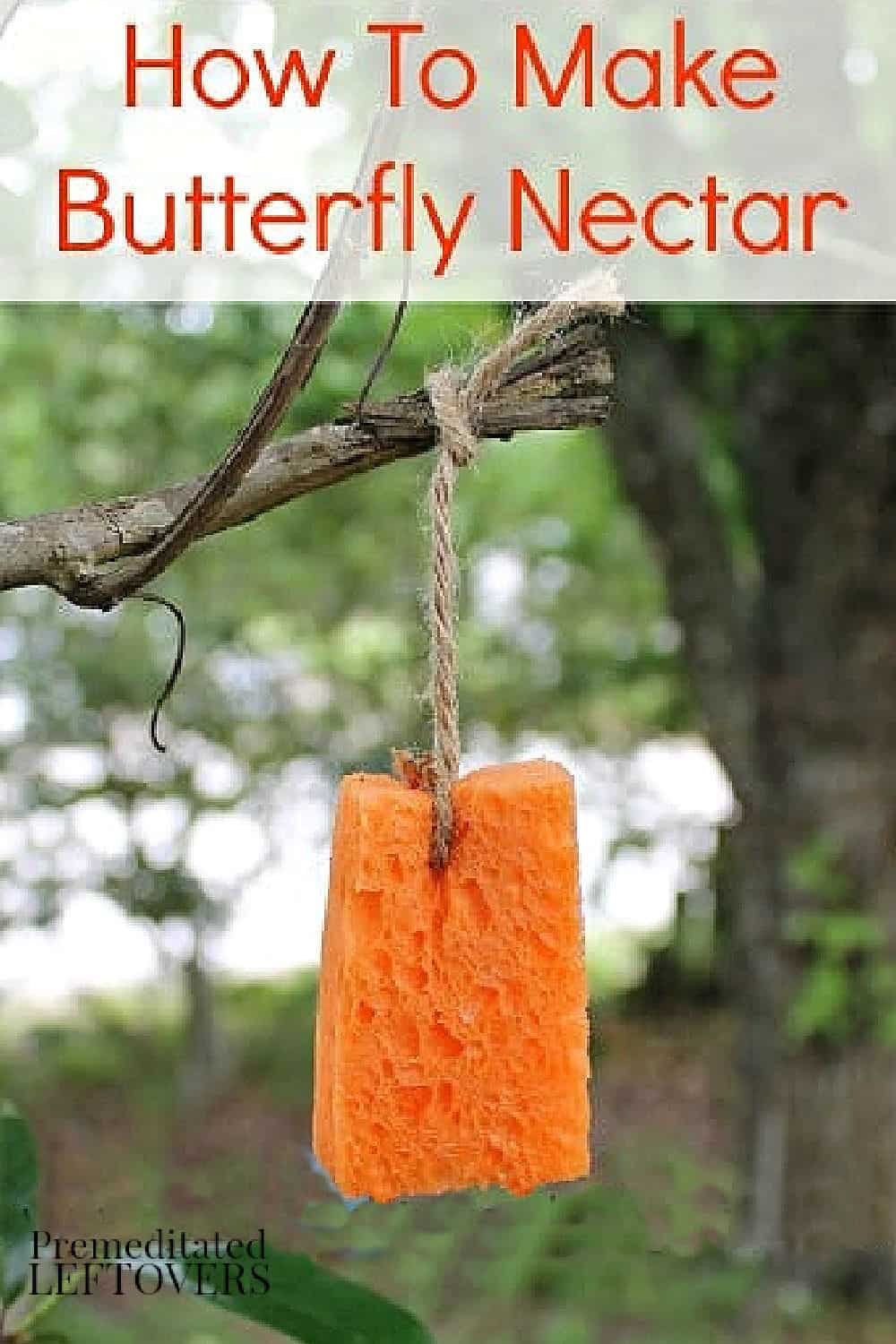
Besides the myriad of beautifully colored and wonderfully scented flowers that you can plant throughout your garden and yard, there are a few other things you can do to draw butterflies in and keep them coming back. Making them feel welcome with food and shelter works for relatives and butterflies alike. One thing is to offer them butterfly nectar scattered about, hanging in trees, or placed in shallow dishes tucked in shady spots. It costs very little to make butterfly food and takes just a few minutes. Children love helping to put together this simple recipe for butterfly nectar and watching the parade of winged wonders that will surely pass by your yard.
How to Make Butterfly Nectar Recipe
Supplies:
- Sponges
- 1 cup water
- 1/4 cup granulated sugar
- twine or string
Directions:
- In a small saucepan bring 1 cup of water to a boil, stir in sugar and simmer until dissolved.
- Remove from heat and cool completely.
- While the syrup is cooling cut sponges into 4 smaller rectangles.
- Cut or poke a small hole in each sponge.
- Cut 8″ length of string and thread through a sponge.
- Dip the sponge in syrup until full, allow excess to drip from the sponge before hanging on limbs, porch railings, or anywhere else you want to leave a “drink station” for your winged friends.
Alternatively, you can place several sponges in a shallow dish with the syrup mixture and place the butterfly food in your garden.
Be sure that you also have plants in your yard for the butterflies as well as the plants that the caterpillars will need to feed on after hatching. Research the butterflies that are common to your area, and what plants they need for their full lifecycle, then add those plants to your yard. You don’t want to use this butterfly nectar to attract butterflies to your yard if you cannot support them.
Printable Butterfly Nectar Recipe
Homemade Butterfly Nectar Recipe
Materials
- Sponges
- 1 cup water
- 1/4 cup granulated sugar
- twine or string
Instructions
- In a small saucepan bring 1 cup of water to a boil, stir in sugar and simmer until dissolved.
- Remove from heat and cool completely.
- While the syrup is cooling cut sponges into 4 smaller rectangles.
- Cut or poke a small hole in each sponge.
- Cut 8" length of string and thread through a sponge.
- Dip the sponge in syrup until full, allow excess to drip from the sponge before hanging on limbs, porch railings, or anywhere else you want to leave a "drink station" for your winged friends.
More Ways to Attract Butterflies:
How to Make a Butterfly Puddler
6 Frugal Ways to Attract Butterflies to Your Yard
Attracting Butterflies with Butterfly Bushes
Originally published April 27, 2014. Updated on April 26, 2021.
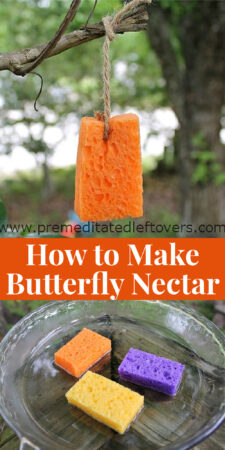
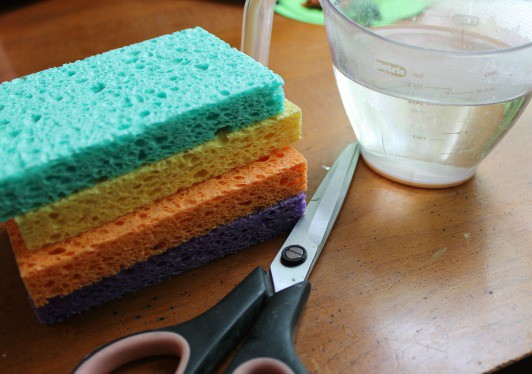
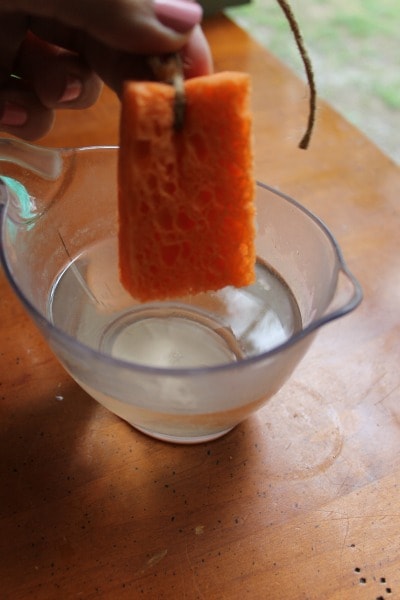
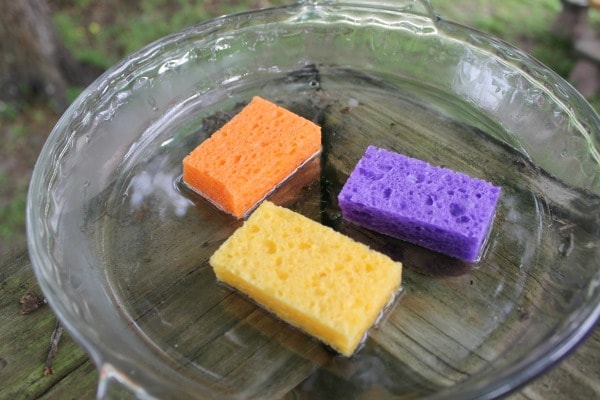
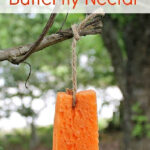

Connie says
Can’t wait to try this!!! Thank you for sharing!!!!
Truly I appreciate your
Lynn says
I would love to try it this for the butterflies. However I am concerned it would attract bees. I feed the hummingbirds in a hummingbird feeder and would love to enjoy the butterflies without planting flowers they like. Any suggestions?
Georgia Sellers says
I bought a Milkweed plant back in May. I have kept in my house as I wanted it for a house plant. Today there was a caterpillar on one of the leaves. I put it outside in the sun under a caterpillar tent. It seems too late for a Monarchs, so any suggestions would be appreciated. Do I just leave it outside and hope for the best? I have never raised butterflies before. I am so excited!!